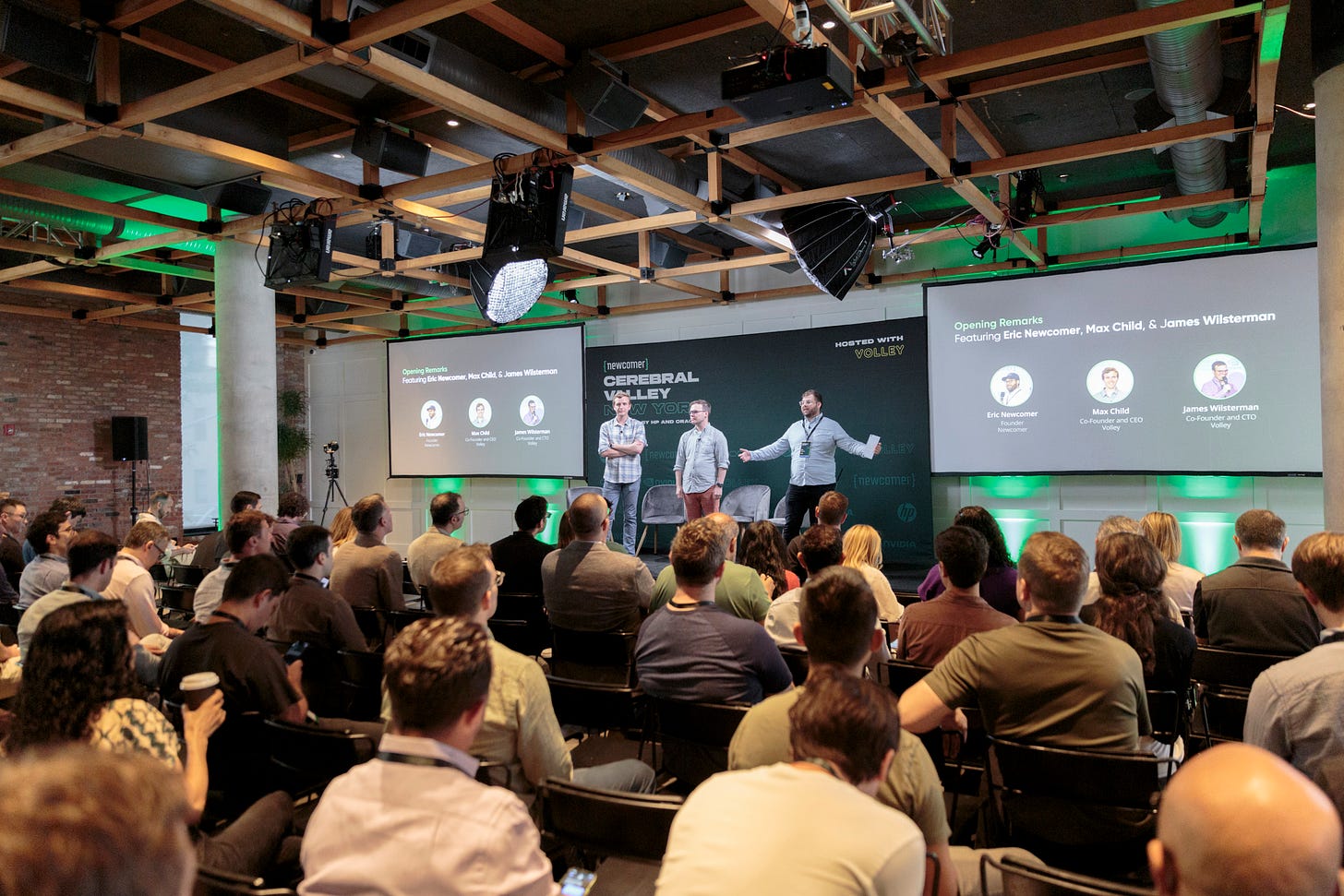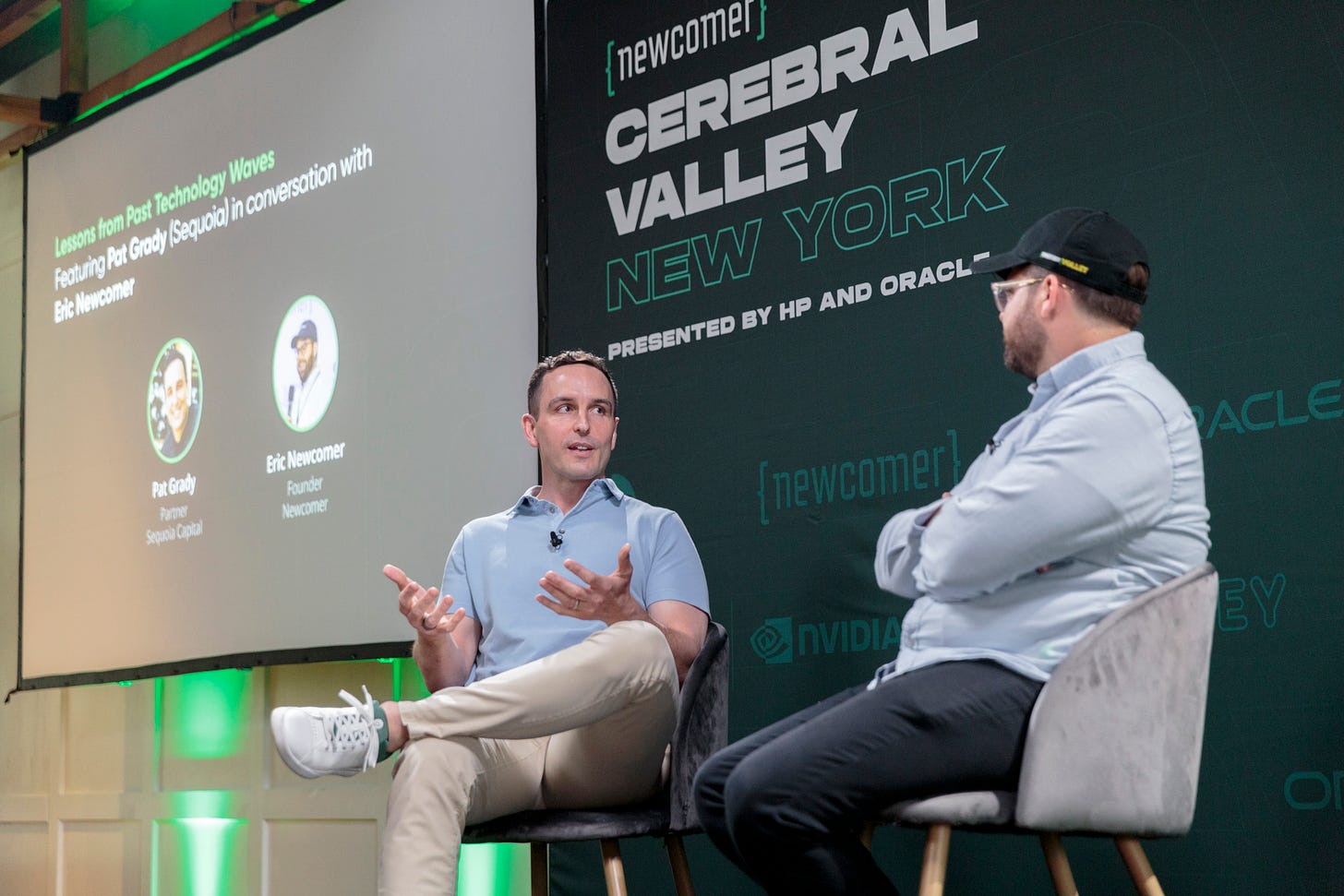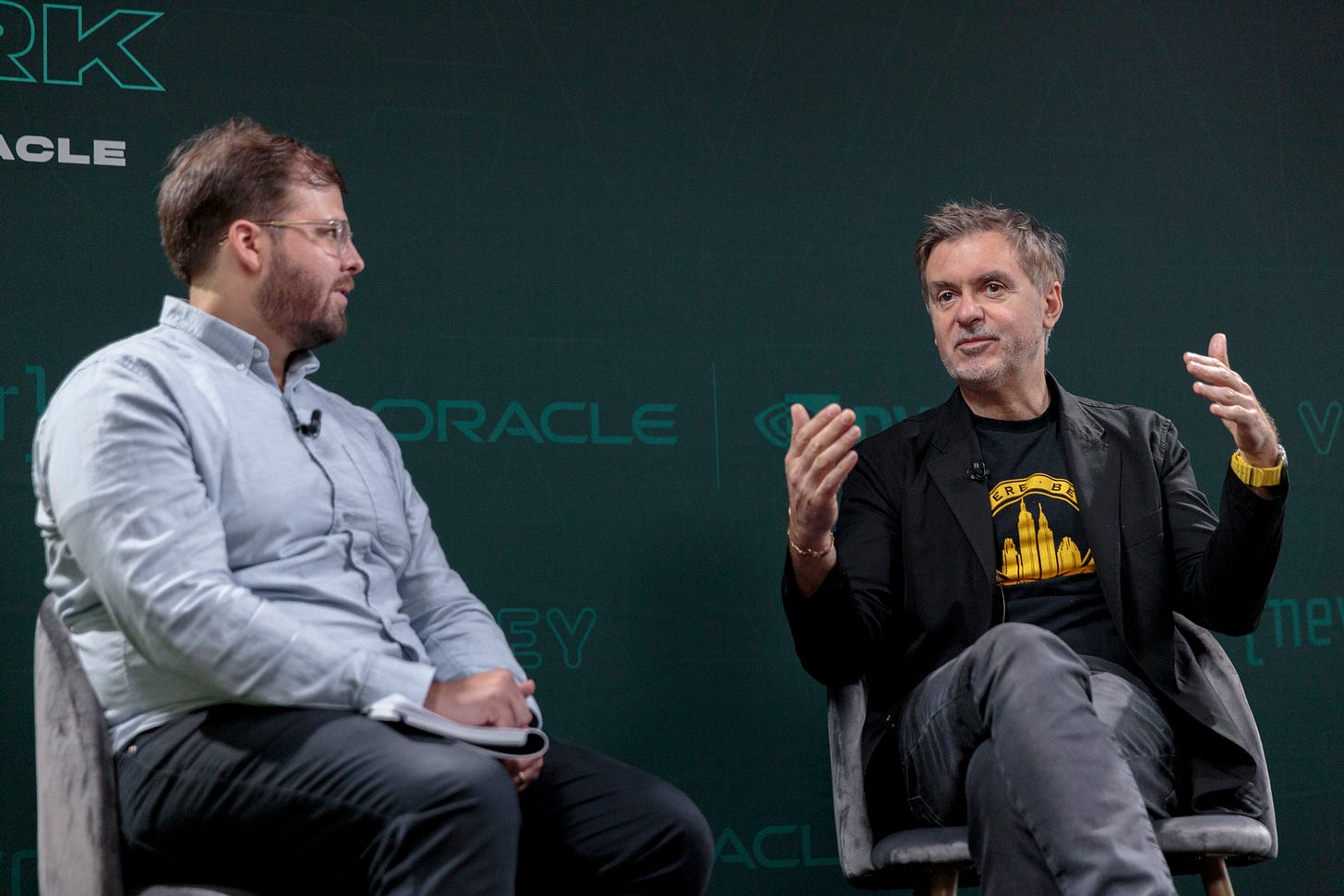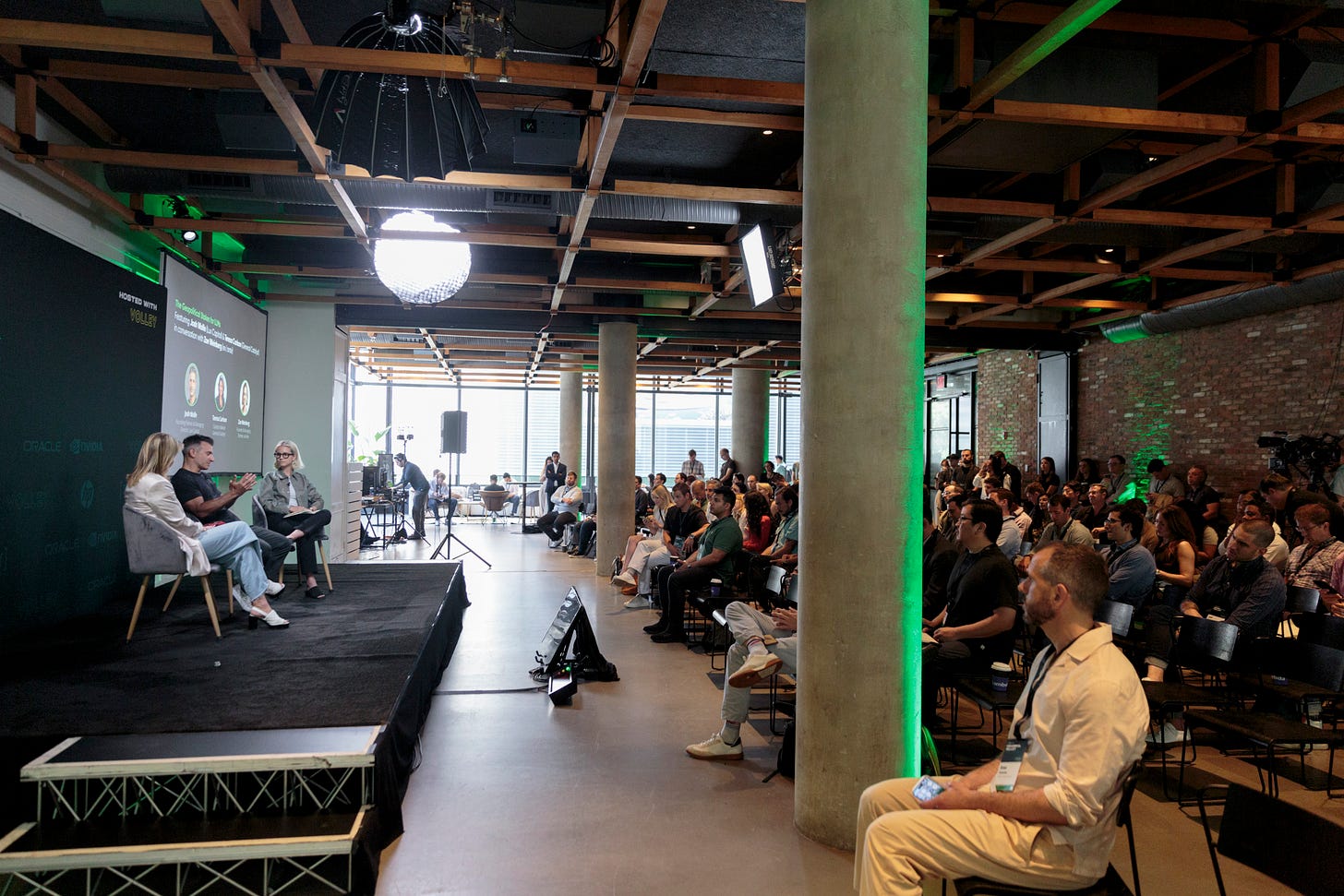The Download from Cerebral Valley New York: Big Models Lose Their Iron Grip as the Zeitgeist Shifts to Applications
What we learned from leaders at Snowflake, Datadog, Sequoia, Databricks, Goldman, Lux, Index, Runway, Lambda, and more.
It’s time to build artificial intelligence applications. Don’t wait for foundation models to get smarter. Get going. That was one of the consensus messages that emerged from speakers on stage at Cerebral Valley New York Thursday.
About 200 leaders in artificial intelligence gathered in Manhattan yesterday for the third installment of the Cerebral Valley AI Summit, hosted by Newcomer and Volley. Snowflake CEO Sridhar Ramaswamy, Goldman Sachs CIO Marco Argenti, Datadog CEO Olivier Pomel, and Ramp CEO Eric Glyman were speakers.
“I think the capabilities today are enough to build just trillions of dollars worth of new businesses,” Sequoia’s Pat Grady said on stage, half-wishing for an AI intelligence slowdown. “I think a little bit of stability at the model layer would actually be good for the ecosystem on top, because then you can make more reasonable predictions about what you need to build.”
One application company that had a lot of buzz at the event was Mikey Shulman’s music creation-company Suno. Several venture capitalists, including Sarah Guo and Vince Hankes name-checked Suno as one of the best AI companies outside of their portfolios. (Of course, the music industry had just dropped a potentially devastating lawsuit against Suno days earlier. We asked Shulman about that on stage. More on that below.)
OpenAI was not the elephant in the room that it had been at our Cerebral Valley AI Summits in San Francisco in March or November last year. (Altman made a drop-in appearance at the speaker dinner for our November event just a few days before his board temporarily ousted him.) Sure, people speculated about the timing of GPT-5 and whether it would be wicked smart — but OpenAI didn’t loom as large as it once did. That’s thanks in part to the hard work of open-source models built by companies like Meta and Databricks eroding OpenAI’s centrality. (Meta and Databricks are not doing it out of the goodness of their heart though, as they talked about on stage.)
Goldman Sachs CIO Marco Argenti announced yesterday that the bank had created a platform for foundation models, striking partnerships with Microsoft, Google, and Amazon. That’s not a world where there’s one foundation model to rule them all.
Both Grady and Datadog CEO Olivier Pomel said on stage that they saw foundation model providers as more akin to database companies like MongoDB than megacap hyperscalers like Amazon and Microsoft. (Grady, who is an investor in OpenAI, said much of his bull case for the standard bearer is tied to their ability to create popular AI applications like ChatGPT.)
Of course, it’s early days for AI applications. We all lived through the crypto buildout where tons of money was dumped into new blockchains and infrastructure before anyone realized they couldn’t come up with applications that justified all the Web3 excitement.
This time, I do believe, is different.
Yes, the applications are early. But at our steering committee dinner hosted with Sapphire Ventures and Latham & Watkins the night before the conference, I talked to Anna Bofa, a Pinterest and Facebook alum, who is building a sort of self-aware Pinterest board for everything you love online. At our speaker dinner that we co-hosted with Greylock, I met the buzzy AI sales coach Rilla that was founded by a standup comedian. Meanwhile, at a breakfast on Wednesday that we hosted with Menlo Ventures, I met the Osmo CEO Alex Wiltschko who is building new ways to create scents with artificial intelligence. All three founders gave me a lot of hope that this AI stuff is really going to take us somewhere cool.
Below we’ve got the full-download on what I honestly believe was our most successful summit. Yes, even though we were in New York. I’d say about 30% of the crowd was from the West Coast, a small smattering from Europe and Asia, and the majority from New York and Boston. I think we retained some of the professionalism we’d figured out by our second summit while getting rid of the disconnected stage and bringing back that raw, connected quality from our first event in Volley’s Hayes Valley office. We introduced small-groups this time which I think pushed everyone to meet some new people and gave everyone a little bit of time to be heard.
The Cerebral Valley AI Summit which Newcomer hosts with Volley will be back in San Francisco in November. It’s emceed by me, Eric Newcomer, along with my close friends Max Child and James Wilsterman.
Thousands of enterprises around the world rely on Oracle Cloud Infrastructure (OCI) to power applications that drive their businesses.
OCI customers include leaders across industries such as healthcare, scientific research, financial services, telecommunications, and more.
NVIDIA AI Enterprise brings the software layer of the NVIDIA AI platform to OCI, accelerating the data science pipeline and streamlining development and deployment production-grade generative AI applications. It includes NVIDIA NIM™, a set of easy-to-use microservices for accelerating the deployment of generative AI models across the cloud, data center, and workstations.
Talk with Oracle about accelerating your GPU workloads.
We couldn’t have done this one without our sponsors: many thanks to HP, Oracle Cloud Infrastructure & Nvidia, Sapphire Ventures, Lambda, Greylock, Menlo Ventures, and Latham and Watkins.
We’ll send follow-up posts with videos from the event over the next week.











